Hawaii is a relatively new place, geologically speaking. Because of that it lacks a lot of the mineral diversity of the mainland. There just hasn’t been enough time for many gems to emerge even if the conditions are right, but that doesn’t mean there’s nothing there to interest a rockhound.
There’s some seriously cool stuff to see in Hawaii, and minerals are among them. Let’s take a look at my list of rocks, gems, and minerals that come from Hawaii.
A Quick Word About Hawaii Rockhounding
Hawaii is an island, and because of that they necessarily limit rockhounding. They receive a half million visitors each month, and we can’t all bring home stones or there would be serious damage in no time.
Because of the laws, you need to be extra careful about picking up anything while you’re on the islands. At the very least you’ve got the normal National Park laws forbidding collection and Hawaii’s own laws which forbid the collection of sand or stones from the beach.
There are still some places available to collect, but they’re few in number. Your best bet is to get in touch with the Rock and Mineral Society of Hawaii if you’re dead set on collecting. For the most part, this article is going to cover tourism rather than collection in this guide.
For those with superstitious inclinations, there is also Pele’s curse to take into account. I’d rather deal with a volcano’s angry goddess than get wrapped up in court proceedings on a notoriously expensive island, but I’d say both reasons are good enough to not stick random stones in your pocket during the trip.
Rocks, Gems and Minerals Found In Hawaii
1. Peridot
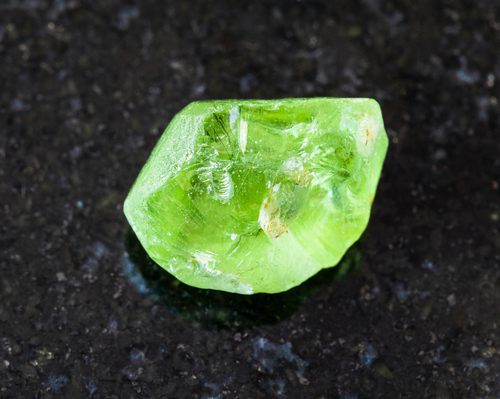
Peridot is the gem form of the mineral olivine. Olivine plays an important part in the landscape of Hawaii, being the mineral responsible for the famous green sand beaches in the state. Peridot is often found in areas with recent volcanic activity. The reason isn’t that it’s recently formed, instead it’s because peridot forms deep in the mantle and it only surfaces during volcanic eruptions.
Peridot is the only gemstone of commercial importance in Hawaii. It comes up with new eruptions, even raining down on the surrounding area in many cases. Much of it ends up being broken down over time, forming incredible beaches with surreal green colors in the sand. Larger chunks are sometimes gem quality and highly sought after.
The most common source of peridot in Hawaii, the green sand beach of Papakōlea, is also an area where collection is strictly forbidden. Feds, state authorities, or Pele… you’ll have to deal with someone if you decide to start stealing sand or pebbles off the beach. On the other hand, it’s definitely there to enjoy if you can keep your hands to yourself!
If you’re heading to the island you should definitely check out the green sand beaches, just don’t take anything without permission!
2. Obsidian

Perhaps more than any other stone, obsidian is associated with Hawaii. The rapidly-colled volcanic glass forms around recent eruptions, emerging as magma runs into the sea. Obsidian is a true glass, with no coherent internal structure, and it’s colored by iron. Obsidian is held in high regard in Hawaii and taking samples is strictly forbidden.
Oddly, obsidian isn’t as common as many think in the area. Instead, the sole site where obsidian can be found in the state is near Hualālai Volcano. There is a cone-shaped area on the northern face of the volcano that is comprised of pumice fields intermixed with obsidian thrown clear of the volcano in previous eruptions. To see large flows of obsidian you actually have to be on the mainland despite the close association of obsidian and volcanos.
The reason why Hawaii isn’t awash in obsidian despite being an area with high volcanic activity? Pretty simple, really: the magma in Hawaii is often low in silica content compared to lava found in other places. This means that much of the ejected material ends up as different forms of stone, instead of the much-vaunted volcanic glass.
Two unique features of Hawaii related to obsidian still exist: Pele’s Tears and Pele’s Hair. The tears are small droplets that were thrown from volcanic eruptions in the areas. Pele’s Hair is a bit more complex, being an extended strand of silica glass that resembles hair in bunches. It can be found in high places in Hawaii after eruptions since the lightweight strands can carry for miles!
3. Black Coral
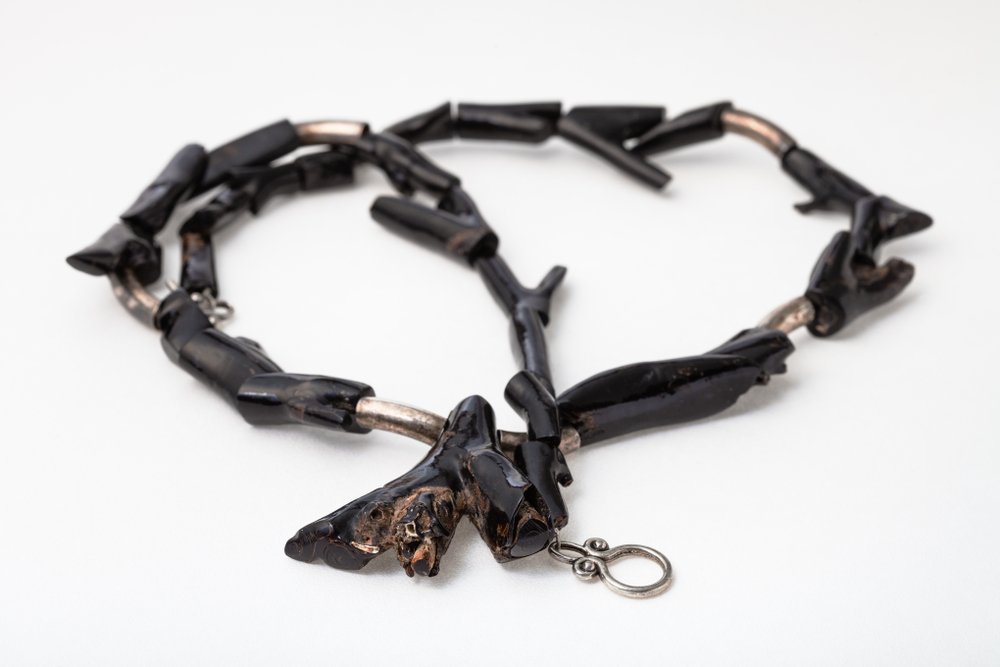
Black coral is an organic gemstone often found on the beaches of Hawaii. It’s also the state gemstone of Hawaii, making it the only local mineral that’s actually on the state list. Hawaii actually lacks a state mineral or rock, just having black coral listed as its official gemstone. Black coral is the skeleton of a deep water soft coral from the family Antipatharian.
While called “soft corals” these corals still have a hardened skeleton that the polyps grow on. “Soft” refers to the polyps themselves, which are the living portion of the coral. The skeleton is either a dark brown or deep black, and pieces of it wash up on shore. While reputed to have any number of medicinal and spiritual properties it’s mostly harvested for jewelry these days.
Humans have overharvested these corals in many locations. In Hawaii, its still harvested on occasion from the continental slope, in addition to pieces washing up on the beach. While not the best material for jewelry (black coral is quite soft), it’s a beautiful “stone” and important to the local economy. Harvest is best left to the professionals in this case, both for conservation reasons and to avoid any interaction with the law.
4. Basalt
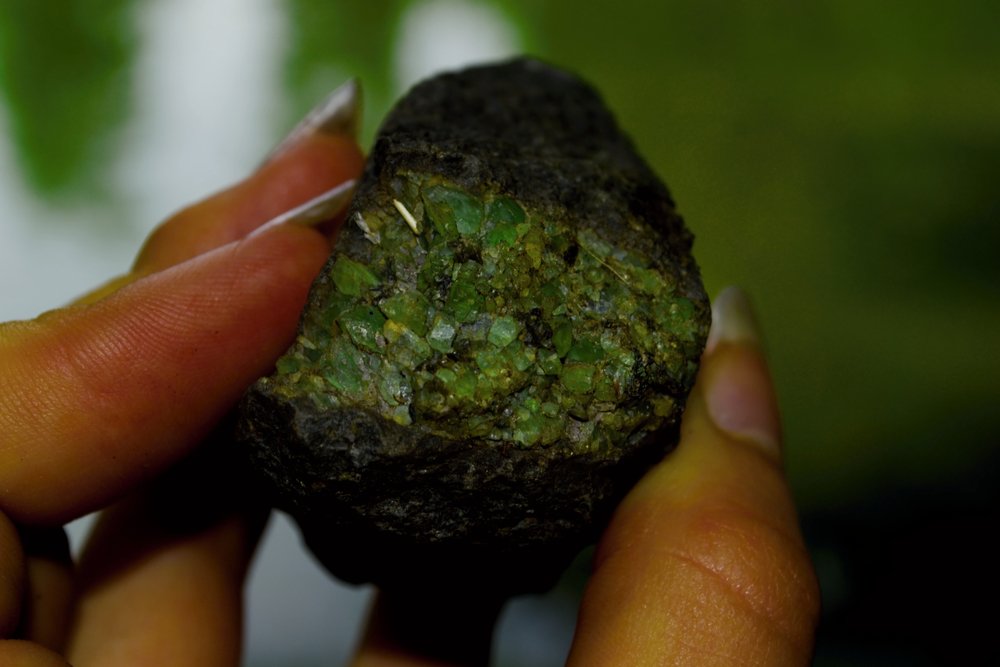
Basalt is one of the main stones found in Hawaii. Basalt makes up the shield of many of the volcanoes in the area, with layers comprised of thousands of thinner layers from previous eruptions forming into a larger mass. Basalt is an important part of the formation of the islands, forming bedrock in many areas.
Basalt is a dark grey to black stone, with a relatively high hardness of 6.0 on the Moh’s scale. Basalt is what happens when magma that’s low in silica but rich in iron and magnesium bursts forth from the surface of the earth. We already know that Hawaii is low in silica, so basalt is a natural fit for many of the volcanos.
Olivine basalt is a spectacular occurrence that can be found in Hawaii. In this case, the basalt forms with large amounts of olivine and creates a green-speckled form of basalt that’s rather attractive. It can be found around Oahu and its decomposition is thought to be partially responsible for the green sand beaches on the islands.
5. Agate/Jasper/Chalcedony
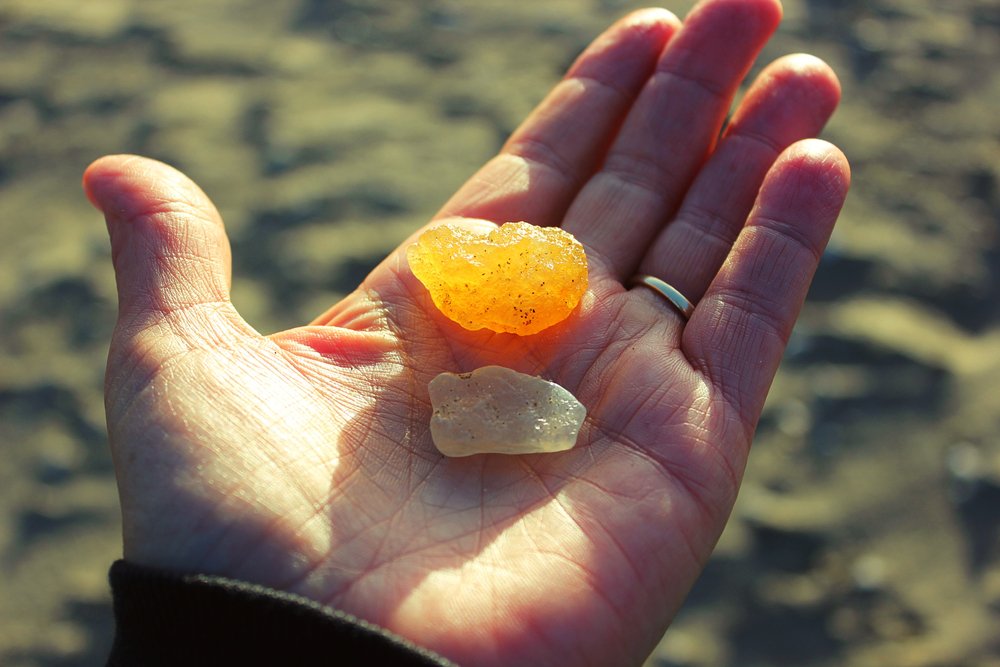
Agate, jasper, and chalcedony can be found in various forms across most of the planet. Especially where there are beaches or other waterways that erode stone over time, leaving behind the harder nodules of cryptocrystalline silica embedded in the bedrock of the area. Hawaii is no exception, although there don’t appear to be any forms unique to the area.
These stones are found on the beaches of Hawaii. That leaves us with the generally strict “look, don’t take” policy that’s found across the state. The stones are particularly prone to washing up on certain beaches like Ke Iki Beach and Kaunala Gulf Beach. Few samples can be found for sale from the region, so most of the information for us is just the occasional picture on the beach.
You can find some small bits of Hawaiin Jasper for sale online, but most look to be pretty boring apart from their provenance. The restrictions on collection in the state make it hard for any stones to leave the islands and the young geological age of the area means they’re not as common as they are on bigger landmasses. It’s still cool to find the occasional stone you recognize on the beach, just make sure you’re legally in the clear if you decide to stick it in your pocket.
6. Sulfur
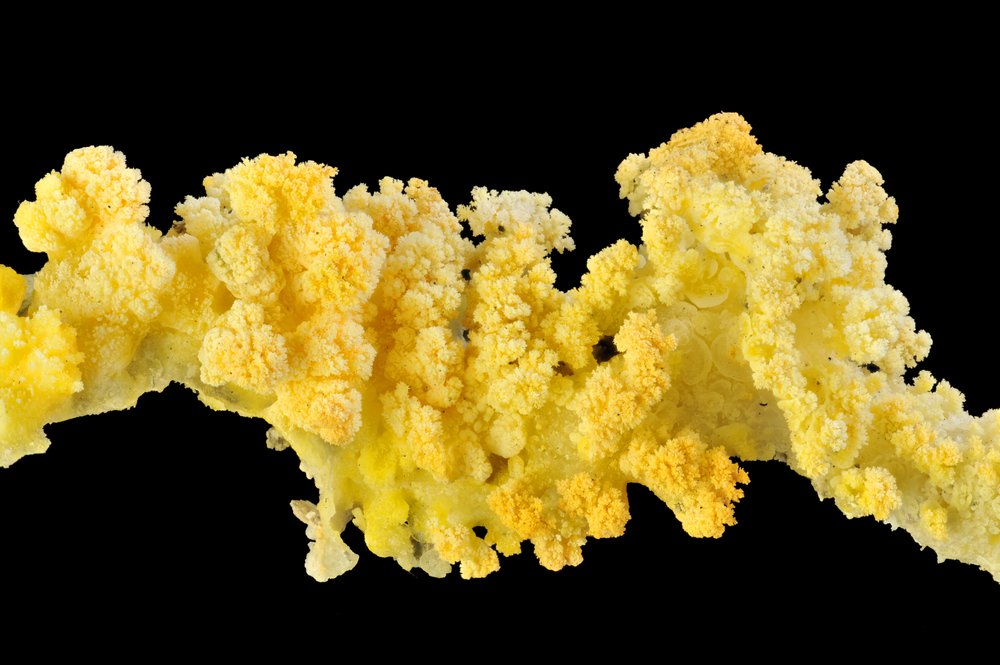
With all of the heavy volcanic activity in Hawaii, it’s no surprise that sulfur is found in some locations. The mineral sulfur appears as a yellow, soft stone with some crystalline features. Sulfur is actually an element, rather than a more complex compound, and the yellow form we’re most familiar with is simply S₈.
Sulfur is formed at the surface in some areas of Hawaii as different gasses interact. One of the common features of areas with high volcanic activity is the fact that they release sulfurous gasses such as hydrogen sulfide into the air. When hydrogen sulfide interacts with sulfur dioxide it creates elemental sulfur as a deposit.
This can be seen most clearly in the area of Haʻakulamanu, or Sulphur Banks. This area is rife with volcanic activity and the residual sulfur is called kūkaepele by the locals. The sulfur formation is an interesting feature of the region, but collecting is both illegal and dangerous due to the gasses present.
7. Augite
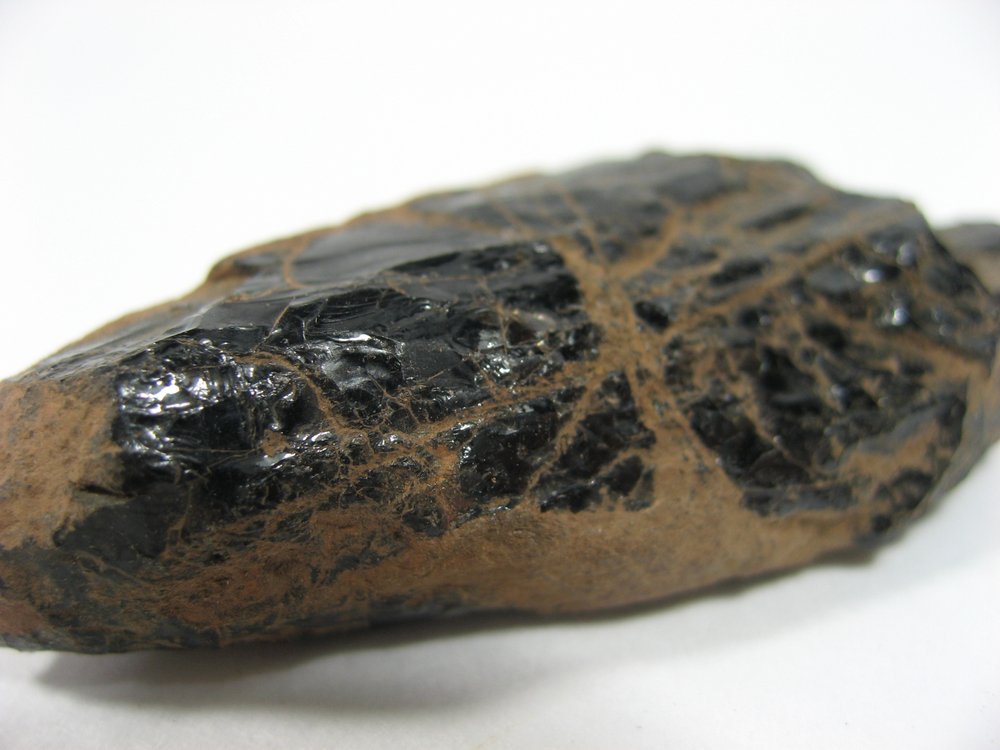
Augite is a common find in malefic stone, or those which are igneous but low in silica. Augite is a fairly nondescript rock in most cases. It has an overall crystal form but it doesn’t always quite make it to the point of being pretty. These stones are sometimes recognized by their larger crystal shape, but more often augite is simply embedded in local rock and shows up as black spots.
In some cases, augite actually has a decent form to it. In the best examples, the mineral shows up as a glossy black monoclinic crystal. It can be found scattered throughout the basalt that makes up most of the islands. Still, even at its best it’s mostly of interest to geologists who are studying the local area.
Augite is about as close to a “boring” rock as you’ll find, at least visually. Still, it’s a complex mineral that emerges under certain conditions. The study of it may not yield beautiful gemstones or complex chemical reactions, but it remains an important marker for those who study the Earth’s natural history.
8. Quartz
Quartz is omnipresent on our planet. It sometimes seems that you can’t go anywhere without finding some. Hawaii would seem to be a place where it’s not likely to occur if anywhere is, due to the low silica content of the magma that erupts from the local volcanoes. You’d be wrong, and there’s even a special name for the quartz crystals that are found in the area, “Maui Diamonds.”
Quartz is the macrocrystalline form of silica. That simply means that it’s had a lot of time to crystallize and create the complex, hexagonal structure that quartz crystals are known for. These clear crystals are prized, I can think of few rock collectors who don’t have at least a handful of points scattered through their collection. Simple beauty while being common is a plus for quartz, but it’s not true in every location.
“Maui diamonds” are very rarely found, and often only in smaller sizes. Since they’re often found on beaches they still fall under the “don’t take” policy that should be assumed as a general rule in Hawaii. They’re rare enough that samples can be hard to find even pictures of, but there are a few available to give you an idea.
- Online rock and mineral club for collectors of all levels!
- Find community with like-minded rock and mineral enthusiasts.
- Monthly Giveaways!
- Free Access to Entire Digital Library of Products (annual memberships)


